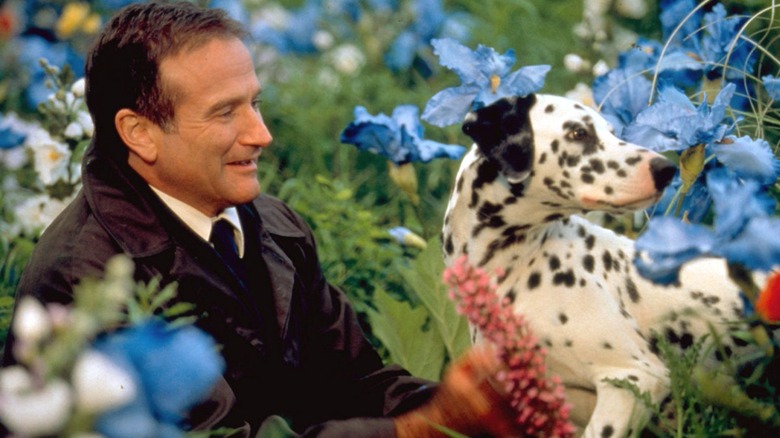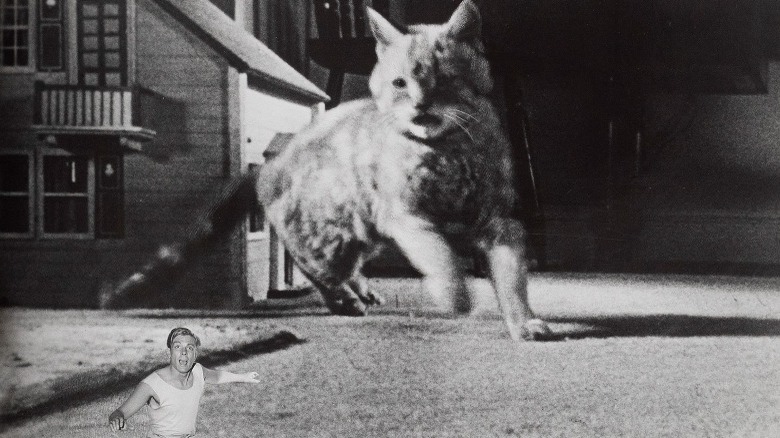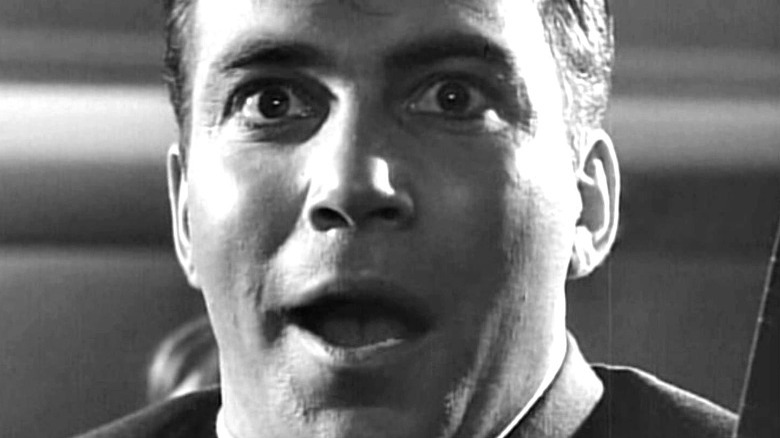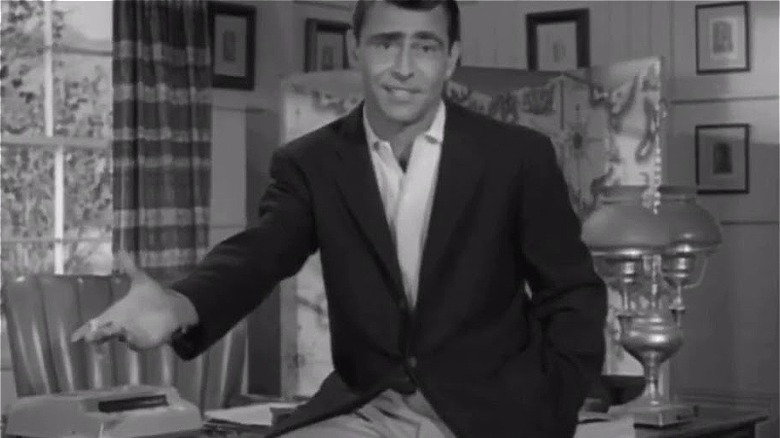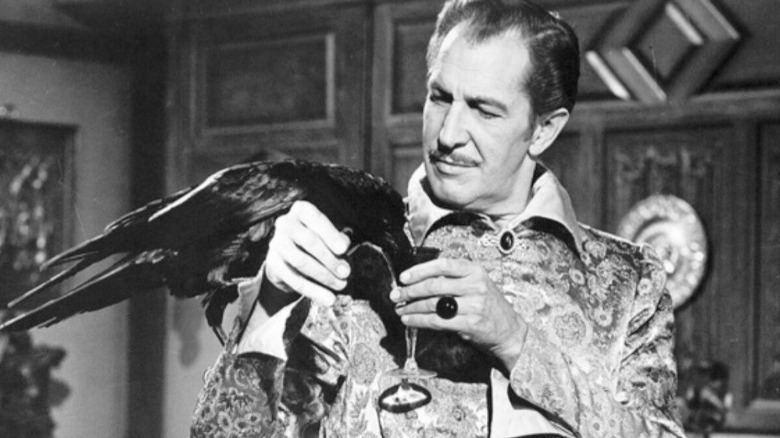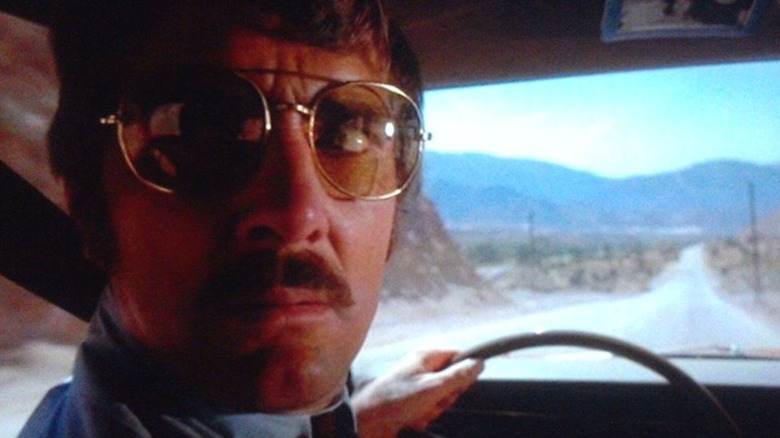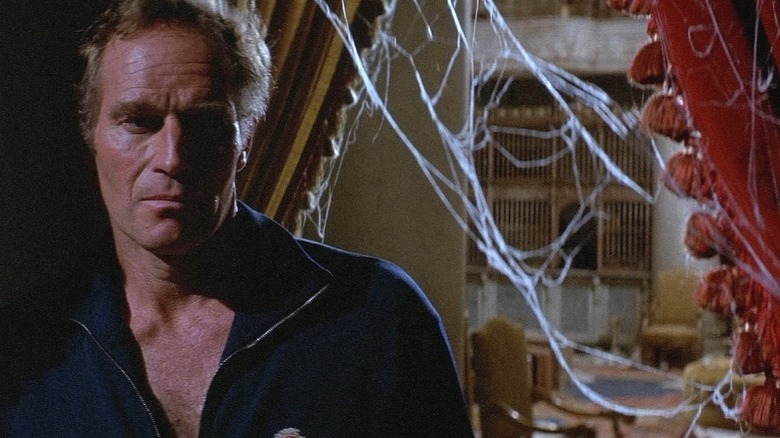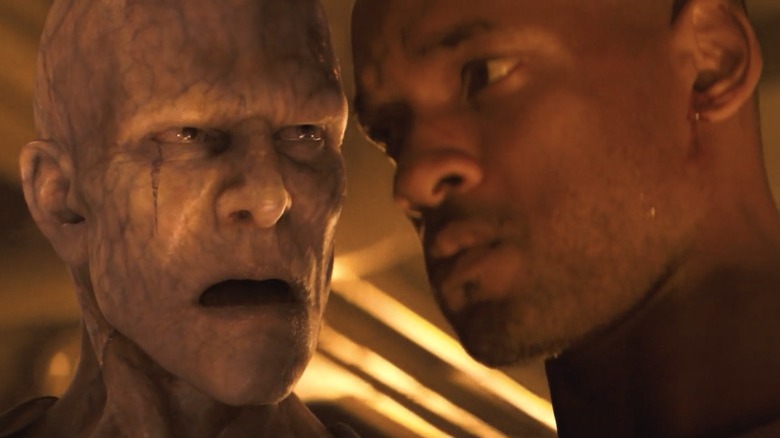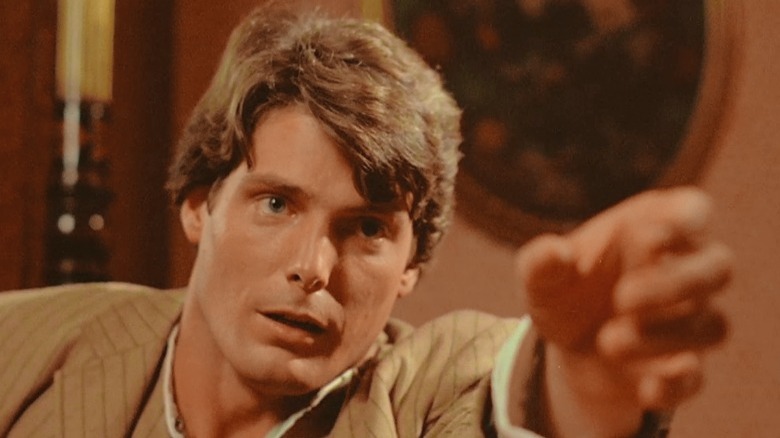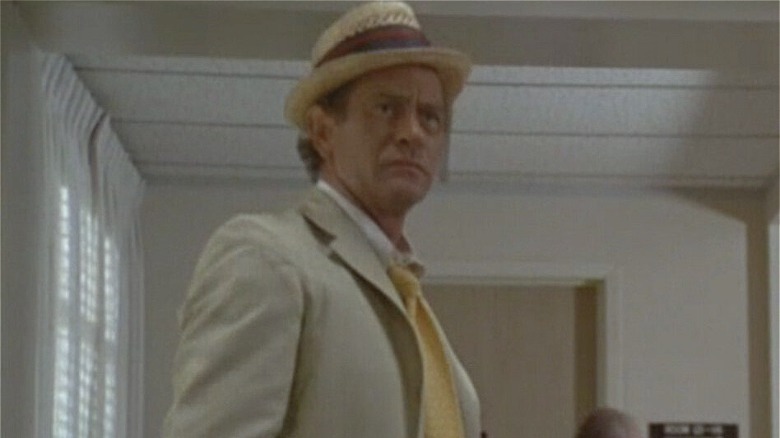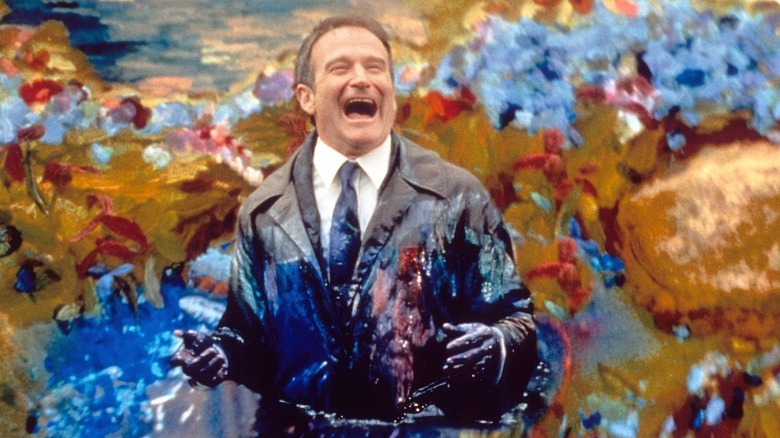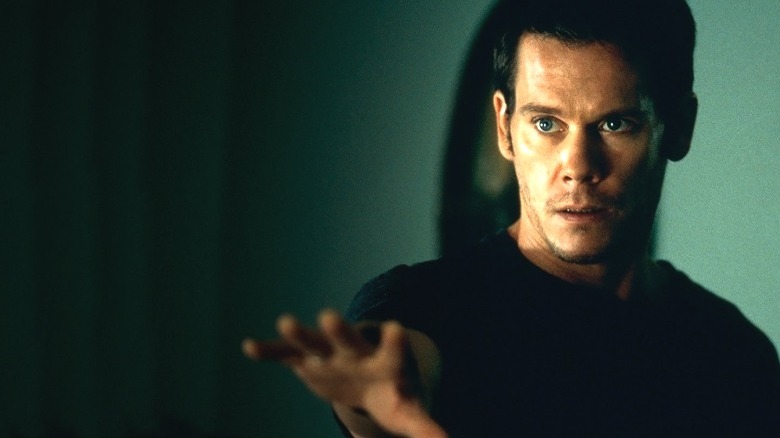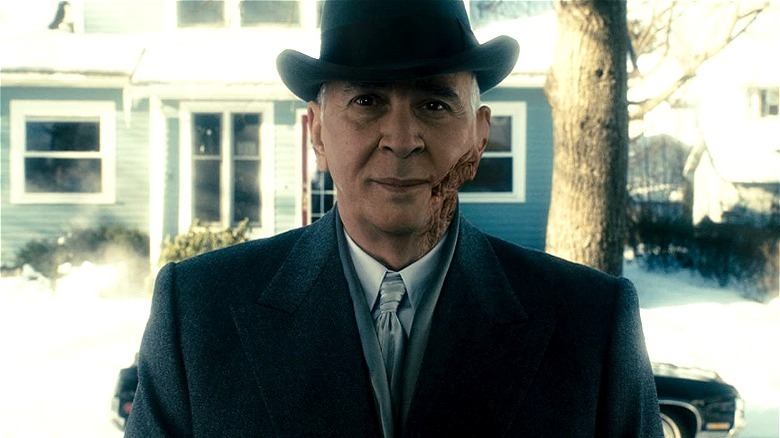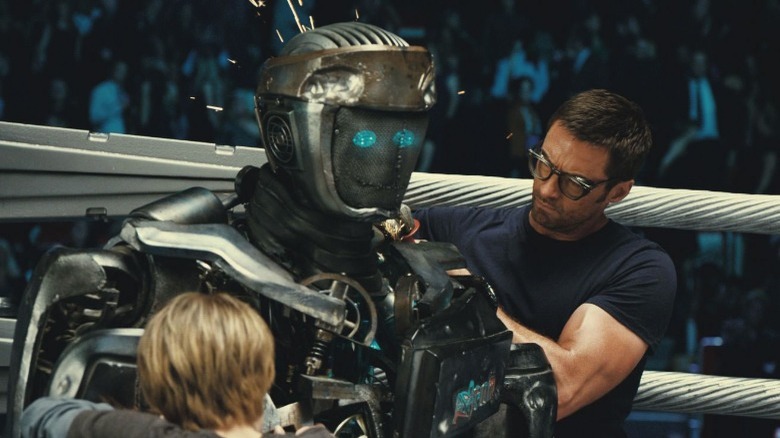Richard Matheson, The Influential Science Fiction Writer You've Never Heard Of
We may receive a commission on purchases made from links.
Richard Matheson isn't a name film fans have at the tip of their tongue. The Jersey-born writer gets a Google bump annually, as New Years' anti-celebrants fixated on SyFy's "The Twilight Zone" marathon will keep seeing his name come up in the writer's credits. "Star Trek" fans likely remember the episode "The Enemy Within," if not its writer. It was the first episode to feature a transporter accident early in Season 1. The glitch creates two Captain Kirks, one good and one evil, a franchise trope that now occurs often enough that an in-universe character can legitimately suffer from transporter phobia.
Matheson's work often looked at who we were at heart, searching for our true selves through wild tribulations. Like his contemporary, Rod Serling, Matheson was a World War II veteran with a complicated view of our existence. Fascinated with metaphysics and spirituality, he would explore these topics several times in his career. Some of these would inspire classic films like "Somewhere in Time" and "What Dreams May Come." Matheson died in 2013, living long enough to see dozens of adaptations of his work come to life. Among his achievements are some of the most important or influential works of science fiction that have inspired others. Let's take a look at them.
The Incredible Shrinking Man
One of Richard Matheson's first novels, 1956's "The Shrinking Man," was filmed as "The Incredible Shrinking Man" only a year later. This adaptation is excellent, brought to life by director Jack Arnold, who turned "The Creature from the Black Lagoon" into one of Universal's iconic monsters. With the same thoughtfulness Arnold gave that swampy creature, and terrific special effects, "The Incredible Shrinking Man" doesn't lose Matheson's philosophical underpinnings in its finale.
Both Matheson's novel and the film are about a guy named Scott that gets irradiated by a strange mist. It interacts with a chemical he ingested (better not to question it), and the next thing he knows, all his clothes don't fit him anymore. Eventually, Scott's fighting off bugs in his house and dealing with the existential dread of life at the subatomic level. For reference, Marvel's Hank Pym, the first Ant-Man, wouldn't exist until 1962. Although the comics took a gonzo science approach instead of Matheson's exploration of an everyman under duress, the popularity of "The Shrinking Man" probably helped Hank, and later Scott Lang, come to life.
The Twilight Zone
Richard Matheson wrote over a dozen episodes for both the original run of Rod Serling's "The Twilight Zone" and its 1980s revival. Many of them are standouts, some so notable that they would be adapted into feature-length movies years later. One episode, "Little Girl Lost," was so remarkable that it apparently served as the uncredited inspiration for Tobe Hooper and Steven Spielberg's exemplary "Poltergeist." Matheson's original story deals with dimensional riddles, not questions of the afterlife, and was written to cope with his own fears of losing his daughter. Otherwise, the plot beats are similar to "Poltergeist," with little Tina lost within her home, the family reaching out to an expert for help, and Tina's mother, Chris, becoming instrumental in rescuing Tina from this otherworldly dimension.
Matheson also wrote one of the most famous episodes of "The Twilight Zone" that exists, the story that made William Shatner memetic years before "Star Trek." "Nightmare at 20,000 Feet" is the one with the creature on the wing, the possible result of a man afraid to fly who's then confronted with his worst nightmare. But it turns out that the gremlin, and his fears, are legitimate after all. Directed by Richard Donner, it's an episode that typifies the best "The Twilight Zone" has to offer.
Still in The Twilight Zone
Another "Twilight Zone" episode by Richard Matheson, "A World of His Own," was a unique, quirky tale about a writer caught between his wife and his pretty muse. Gregory, the writer, can't convince his wife that the pretty young thing isn't a threat to their marriage, because she isn't real. Neither, as it turns out, is his wife. The episode is a rare lark for the series, and the finale is the first and only time Rod Serling appears as a character before disappearing as another of Gregory's fictional constructions.
Nearly all of Matheson's scripts are terrific; he's also the author of "Nick of Time," the other episode to feature William Shatner. This one sees future Kirk as a honeymooner that grows obsessed with the Luciferian fortune dispenser at his diner table, barely wrenching free of its hold on him by the time the credits roll. But even more well-known is "The Invaders," the mostly-silent episode that features Agnes Moorehead ("Bewitched") as a lonely old woman besieged by tiny invaders from Earth.
Roger Corman and the Edgar Allan Poe Cycle
From the 1960s through part of the '70s, pulp horror movies made weekends fun for teens with cash to burn. Though dozens of stylish Hammer Film horror imports set the tone, the new era of spooks and scares would belong to directors like Roger Corman and George A. Romero. But Corman had several aces in his pocket: the public domain stories of Edgar Allan Poe, Vincent Price as his leading man, and Richard Matheson to adapt Poe's works into screenplays.
Matheson's scripts set the template for what's called the Corman-Poe Cycle. Writing four of the eight films that make up Corman's classic horror franchise, Matheson starts strong with an adaptation of "The Fall of the House of Usher." Matheson's script gave Vincent Price plenty to talk about, putting Poe's subtler themes into words the audience can't miss.
"The Pit and the Pendulum" allowed Matheson to rework Poe's story into something different. Adding a new backstory, this film moves away from Poe's terror of the Spanish Inquisition into a ghostly melodrama that happens to occur in Spain. Matheson's last script, "The Raven," is even more imaginative. Here, Matheson turns Poe's most famous poem into a campy but fun romp about a wizard's duel that let Price play with a live raven.
Duel
Even Steven Spielberg started small. His first feature film was released in November 1971, a made-for-television flick named "Duel," starring Dennis Weaver. This miniature horror hinted at what its new director would soon be capable of, doling out dreads unseen as a salesman is hunted by a truck driver possessed by something stronger than road rage. The screenplay, with its scant glimpses of the malignant trucker inside his weaponized vehicle, was Richard Matheson's.
The original short, published in Playboy's April 1971 issue, was written almost a decade earlier. Matheson was in a car with a friend on the day of JFK's assassination when they were really badly tailgated by an aggressive truck driver. The incident stuck with Matheson, already an established writer, and this sleek Camaro of a story adapted well to the TV movie format. The explosions are fancied up, and the bulk of the budget, around $400,000, went to effects. The psychological drama comes through as clear as desert radio, and the little film earned a spiffed-out ride on the international theater circuit, with new footage and decades of positive critical response.
The Omega Man
The most frustrating thing about all three adaptations of Richard Matheson's famous novel, "I Am Legend," is that none of them have the spine to stick with the central premise. The new species it describes is a biological vampire, turned by a global pandemic and decimated by a survivor, Robert Neville, who's also intent on finding a cure. The first adaptation was called "The Last Man on Earth," filmed in Italy and released in 1964. Vincent Price may be the leading man, but he can't save a version that Matheson would disown by putting his pseudonym Logan Swanson on the script.
"The Omega Man" is a solid attempt to hew closer to the original novel. This 1971 version stars Charlton Heston as Robert Neville, with the pandemic turning its frightening survivors into Morlock-style mutants pained by sunlight. Some social commentary survives through this adaptation, with actress Rosalind Cash sharing an interracial kiss with Heston and the undertones of a struggling new society peeking through. As a cult science fiction classic, "The Omega Man" is unmissable. But Matheson was less than enthused with this final result, too.
I Am Legend
2007 saw Hollywood take another whack at Richard Matheson's novel. Starring Will Smith, this version takes even greater liberties with its source material than the Italian version. A modest box office success aware of its own mistakes — it has a well-known alternate ending, in which Smith's Neville has a revelation close to the novel's protagonist — it found enough of an audience to kick off pre-production on a sequel.
Matheson's last interviews on the topic of "I Am Legend" in 2001 reveal his frustration with Hollywood's refusal to adapt his novel as he wrote it, predicting another modified version years before filming started. But the latest riff on "I Am Legend" isn't all bad, even if you're consumed by the changes to the novel. Smith, a lifetime fan of science fiction, puts out one of his best performances in this film. His version of Neville capably displays the loneliness and instability that comes with feeling like the last man on Earth, a melancholy bit of art that avoids falling into cheap humor.
Somewhere in Time
"Bid Time Return" is Richard Matheson's gentlest novel, a romance with hints of science fiction. A dying man becomes enthralled with the photo of a long-gone actress, and he uses a form of auto-hypnosis to send his consciousness back in time to meet her. The experiment works, sending him back to the 19th century where our protagonist finds the love of his life. The ending is bittersweet, but what's important is the love he experienced in that brief time.
"Somewhere in Time" is the book's 1980 adaptation, again scripted by Matheson and starring Christopher Reeve as Richard. Richard is approached by an old woman who seems to know him, pleading with him to come back to her. It's not until eight years later that he begins to understand who she was. The film thrives on Reeve's love and charisma, though its ending remains as painful as the novel's. It's also a regional experience; Michigan residents know this film as the star of Mackinac Island's tourist industry. The island's Grand Hotel, where the film was shot, holds an annual weekend event dedicated to the film. There's also an international fan club that's been running strong since 1990.
The Night Stalker
Author Jeffrey Rice hadn't found a publisher for his pulpy vampire novel, "The Kolchak Papers," when it got optioned for a TV movie. It was no insult to his work that the adaptation, "The Night Stalker," hired Richard Matheson to write its script. The result was a hit for ABC that would spawn a sequel, "The Night Strangler" (written solely by Matheson and adapted into a bestselling novel by Rice), as well as the series "Kolchak: The Night Stalker."
Rice's novel and Matheson's script both follow Carl Kolchak (Darren McGavin), a reporter used to the skeevy side of Vegas life. Kolchak becomes an accidental vampire hunter by following up on a series of eerie murders on the Strip, setting himself up for a future of discovering the weirdest stories on Earth. The sequel movie puts Kolchak on the trail of a man and his magic elixir. But it's the cult hit series that made Kolchak important to science fiction fans today. Kolchak is the "father" of "The X-Files," inspiring creator Chris Carter at an early age. It's an important enough link that Darren McGavin would appear as a Kolchak-like figure who previously watched over Mulder's unusual case files.
What Dreams May Come
Richard Matheson's 1978 novel, "What Dreams May Come," includes an extensive and unusual bibliography at its end. The book drew from years of Matheson's research into a variety of spiritual beliefs, including the esoteric 19th-century Theosophy movement. The result is a unique exploration of what happens after we die, following a story of one man struggling to accept his own death and his wife's suicide. The novel is Matheson's most beautiful, exploring rich, natural landscapes as his protagonist, Chris, undergoes a number of spiritual trials.
Adapted to film in 1998, "What Dreams May Come" is a difficult film to watch today. Not because of any flaw on the film's part, which won an Academy Award for its painterly, vivid cinematography, but because Chris is played by Robin Williams at his most sensitive and emotional. Real life makes this story about the pain and the relief in understanding our mortality impossibly poignant, a monument to the man we lost. The film is lovely, the novel one of Matheson's best, and that both exist may be a comfort. It's still not an easy one.
If you or anyone you know is having suicidal thoughts, please call the National Suicide Prevention Lifeline at 1-800-273-TALK (8255).
Stir of Echoes
The late '90s was a strong era for horror, with humanity's collective anxiety subtly ramped up by the change of the century. That created a hotbed of sometimes transgressive horror, often touching on religious or spiritual themes. While "The Sixth Sense" was the box office winner of 1999 in this category, it had quiet but strong competition from the lesser-known Kevin Bacon film "Stir of Echoes."
Based loosely on one of Richard Matheson's earliest novels, "Stir of Echoes" retains some core plot points. Our protagonist, Tom (Kevin Bacon), undergoes hypnosis and finds himself sensitive to the unrestful spirits all around him. The film gives him a family, including a son born aware of the undead world, and the murder mystery plot Tom is thrust into gains a new sense of urgency due to the raised stakes. Though David Koepp's plot veers from the novel in several large respects, it's also the rare film to earn Matheson's own approval.
The Box
There's no scientific proof of genetic memory, but it still feels like we're all born knowing the story of The Monkey's Paw. You can make any wish, but the results will have an ironic twist. Richard Matheson wrote his own updated twist on the formula in his 1970 short story "Button, Button," its gist nearly as well-known: All you have to do is push a button to win a fat stack of money, but someone you don't know will die.
There are two adaptations of this famous tale. One was for the 1980s revival of "The Twilight Zone," and the changes to Matheson's script were extreme enough for him to bust out his Logan Swanson pseudonym once again. The other is "The Box," by "Donnie Darko" director Richard Kelly. Stylish and divisive, though it earned Roger Ebert's approval, the film also changed up Matheson's bleak finale. Found in multiple collections of Matheson's short works, the original story asks us outright if we can ever truly know each other.
Real Steel
"Steel" is a Season 5 episode of "The Twilight Zone," airing in 1963 and scripted by Richard Matheson from his short story of the same name. It's an okay episode, a morality tale about humanity's tenacity when faced with a future that could make them obsolete. Robot boxers are used to drive home the point.
"Real Steel" credits Matheson for his original story, and the results are arguably better than its first adaptation. It doesn't hurt that we have Hugh Jackman as the down-on-his-luck former boxer, Charlie. What really holds the film together isn't just Charlie's relationship with his estranged son, Max (Dakota Goyo). It's the grimy reality that pervades the underworld of the robot fights. The film's cinematography relies somewhat on neon and near-future aesthetics, but it's also dirty. It's riddled with garbage, and garbage people, and happy endings aren't easy to come by.
It's surprising, then, that the ending is melancholy but still fighting for hope, the sort of finale Matheson would have approved of. "Real Steel" continues to have a follow-up in varied stages of development, and if it retains this level of worldbuilding and an understanding of Matheson's style, we can't wait to see it.
